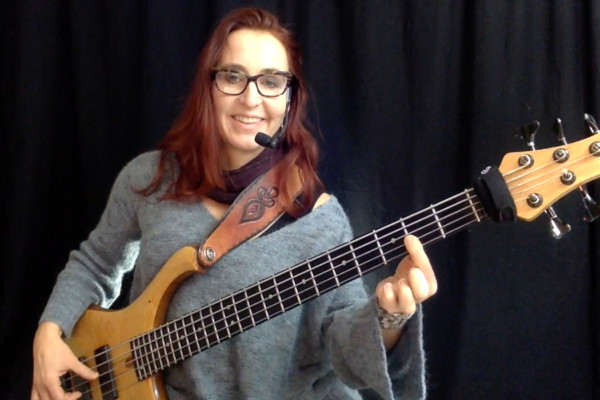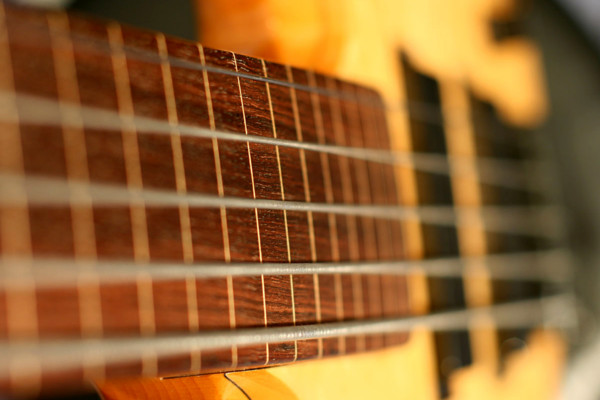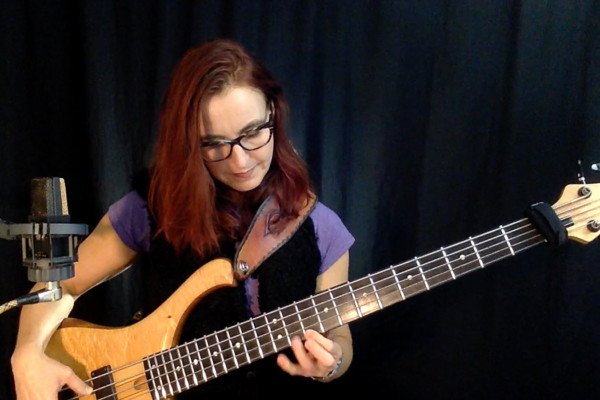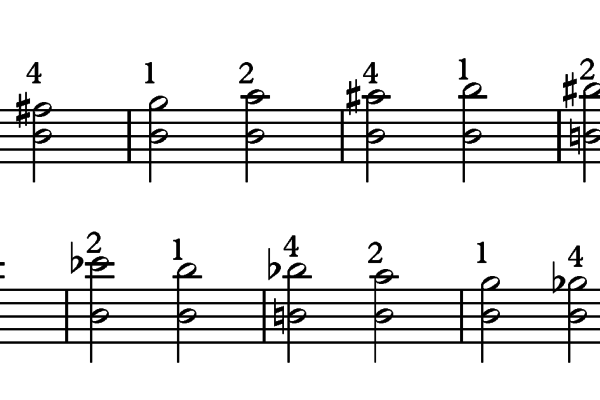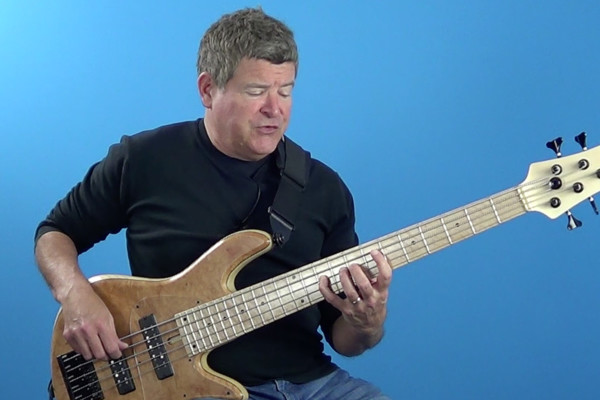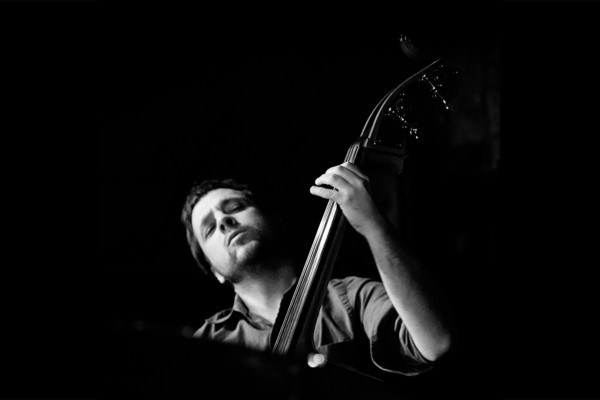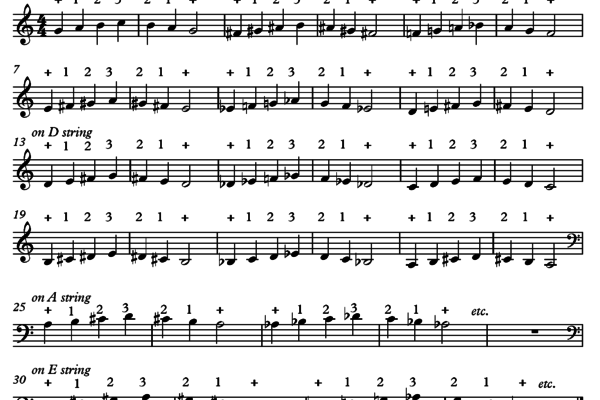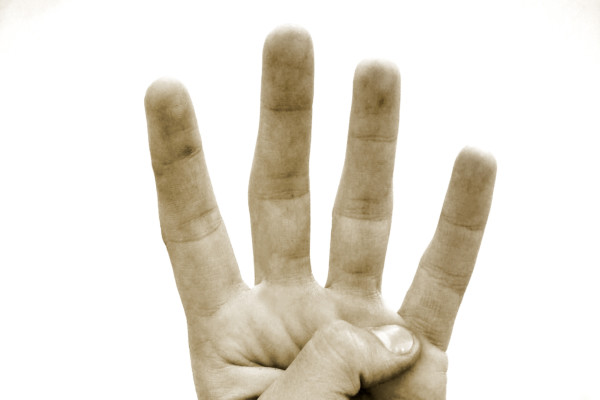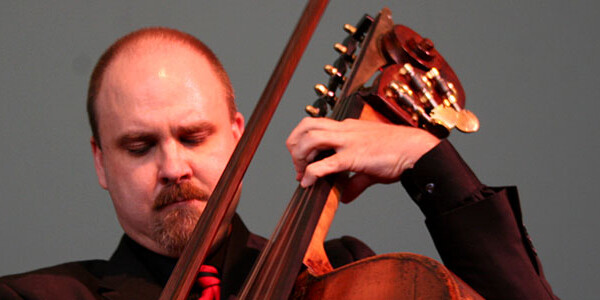Technique Archives - Page 7
Talking Technique: String Jumping Exercises
Bass grooves often have lines that move across strings on the same fret. To keep a smooth and legato feel, we need to focus on the technique of jumping from string to string. Here we’ll dig in on a few exercises with plenty of variations to get all your fingers in shape. Today’s tip is on getting an even attack...
Talking Technique: Fast Fingers
Today we’re talking technique with the right hand and getting those fast fingers. I’ll be going over the two finger alternating plucking style, which will get you through most playing situations. Oftentimes, players get wrapped up in coupling their right hand and left hand processes when playing patterns. I recommend making alternating your fingers an automated process so you don’t...
Dealing With Songs That Go Beyond Your Last Fret
Q: I have a student entering his final year of secondary education. He has just purchased a 5-string Fender Jazz Bass. He is focusing on two handed tapping for his music subject. My worry… much of the music we have accessed (“Overjoyed”, “Rock and Roll” Bass Solo, etc.) requires between 21 and 24 frets according to the tab. The 21st...
Talking Technique: Permutation Variation
In the last lesson, we introduced the Permutation Exercise. This time we’ll talk about some more pattern variations to increase your dexterity. The permutation exercise can be played to drill down on lots of different fingerings that come in handy. We’ll be practicing the concept across strings and by implementing it with the whole tone and half-whole diminished scales. Be...
Talking Technique: The Permutation Exercise
To start things off in this new series, we’re going to be working on our left hand dexterity with the “Permutation Exercise”. Each finger is assigned a number: 1 for index 2 for middle 3 for ring and 4 for our pinky By practicing each variation or permutation of the numbers 1, 2, 3, and 4, we can build finger...
Introduction to Chromatic Scales
For many bassists, the chromatic scale is an underused resource in their practice toolkit. Properly approached, practicing chromatic scales can vastly improve our shifting, intonation and mental map of the fingerboard. Below are a few beginner exercises using the chromatic scale that I find to be useful for those just becoming more familiar with it. Single string 1 8va chromatic...
Advanced Bass: Interval Shapes
In this lesson, we will cover a basic concept for interval shapes to develop your technique, while attuning your ears to hear the root motion of common harmonic progressions in jazz. Follow along with the notation (PDF) and this video:
Singing While Playing? A Discussion for Bass Players
Q: I’ve been reading your columns with great interest for the last year or so, but here’s a question I haven’t seen addressed yet: How do different bass players approach the problem of playing and singing at the same time? I’ve been playing for going on forty years now – both professionally and as a weekend warrior – and this...
Avoiding Discomfort and Pain When Playing the Upright Bass
It should be physically easy to play the upright bass. When we experience discomfort or pain, during or after playing, it is our body’s way of telling us that we are doing something wrong. While each body is unique, there are general guidelines all bassists can follow which will reduce the potential for bass-related injury. Below are some general recommendations...
Thumb Position Below the Half Point of the String on Double Bass
Although I sometimes use a 1-2-3-4 fingering technique below the half point of the string (12th fret, if we had frets), I often find a thumb position fingering to be more efficient, easier on the hand and, most importantly, more accurate. Of course, many bass players first learn thumb position starting at the half point of the string (G harmonic...
Some Thoughts on the 1-2-3-4 Fingering System for Double Bass
For as long as there have been bassists, there has been debate about what fingering system to use. While most players today use a three-finger technique (1-2-4, or the Italian 1-3-4) some suggest a four-finger technique, especially in the middle positions (i.e. between D and G on the G string). One of the main arguments for using a 1-2-3-4 system...
A Quick Warmup for the Left Hand
Sometimes we need to warmup in a hurry. When I need to warmup in two minutes or less I do exercises like the ones below. Some things to remember when doing these: Start slowly and speed up as you go Keep the fingers light and flexible, don’t press any harder than necessary Don’t’ go any faster than feels easy, slow...
